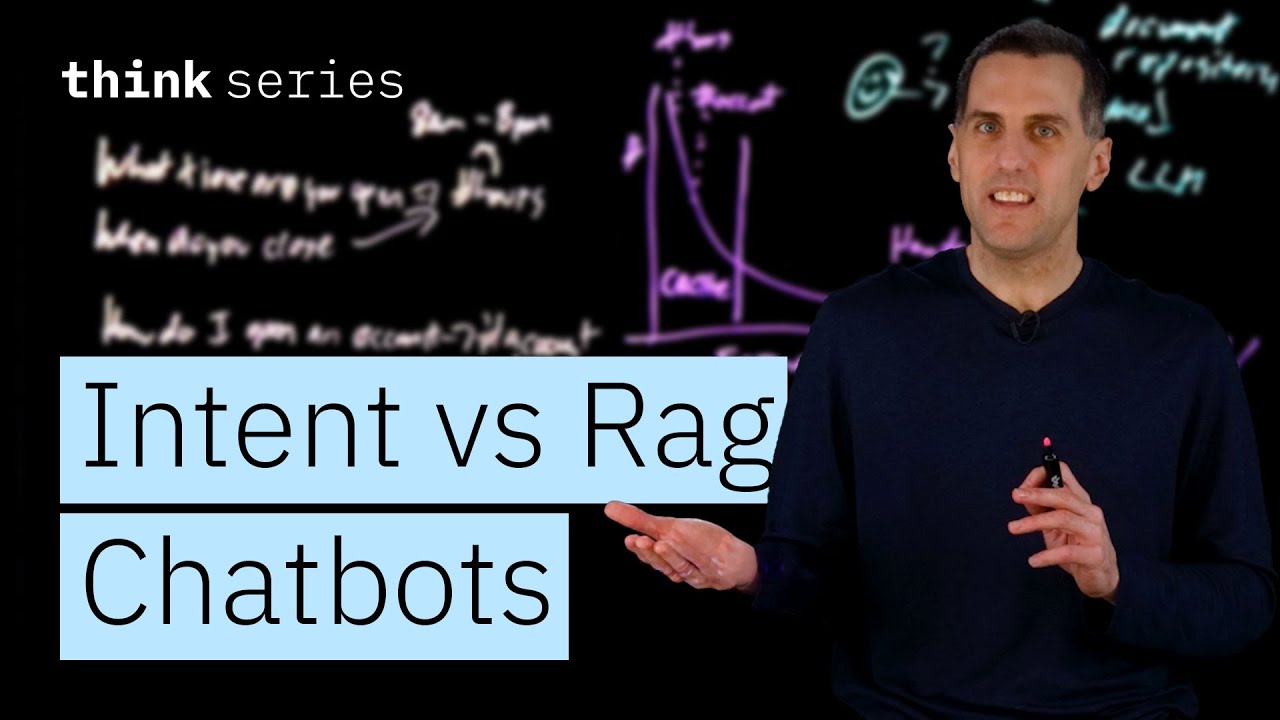The video explains how traditional intent-based chatbots, which rely on handcrafted responses, struggle to scale efficiently as question variety grows, while generative AI with retrieval-augmented generation (RAG) offers a flexible solution for handling both common and rare queries. It advocates for a hybrid approach that combines the speed and control of classifiers with the adaptability of generative AI to create more effective and user-friendly conversational systems.
The video discusses the evolution of chatbot development, contrasting traditional handcrafted approaches with modern generative AI techniques. Previously, building effective chatbots involved training classifiers on specific intents, where each question type was carefully curated with predefined responses. This method allowed for precise control over the answers, ensuring consistency and accuracy for common questions like store hours or account setup. However, as the variety of questions increased, maintaining and scaling these classifiers became increasingly complex and resource-intensive.
The speaker explains how the distribution of questions received by chatbots typically follows a long-tail curve. Most inquiries are repetitive and frequent, such as hours of operation or account information, while a long tail of infrequent questions exists. Training classifiers to understand and respond to these less common questions becomes less efficient and eventually reaches a point of diminishing returns. Beyond this point, the chatbot’s understanding diminishes, leading to poor user experiences with misunderstandings or irrelevant responses.
Generative AI, particularly retrieval-augmented generation (RAG), offers a solution to this challenge. Instead of training classifiers for every possible question, RAG systems retrieve relevant documents from a knowledge base and use large language models (LLMs) to generate responses based on this information. This approach simplifies the process, requiring only two main configuration points: tuning the search query and tuning the answer generation. It allows chatbots to handle both common and rare questions effectively without extensive retraining or manual scripting.
However, this shift to generative AI introduces a trade-off: reduced control over the exact wording and structure of responses. Unlike handcrafted answers, LLM-generated replies cannot guarantee specific phrasing or strict adherence to predefined scripts. For questions where precise responses are critical, such as legal or safety-related information, this lack of control can be problematic. Therefore, relying solely on generative AI may not be suitable for all scenarios, especially where accuracy and consistency are paramount.
The optimal solution proposed is a hybrid approach that combines traditional intent-based classifiers with RAG systems. For frequently asked questions, the chatbot uses curated responses from classifiers, ensuring quick and accurate replies. For less common or complex questions, it switches to the RAG pattern, retrieving relevant documents and generating responses dynamically. This balance leverages the speed and control of classifiers while harnessing the flexibility and scalability of generative AI, ultimately creating more effective and user-friendly conversational AI systems.
